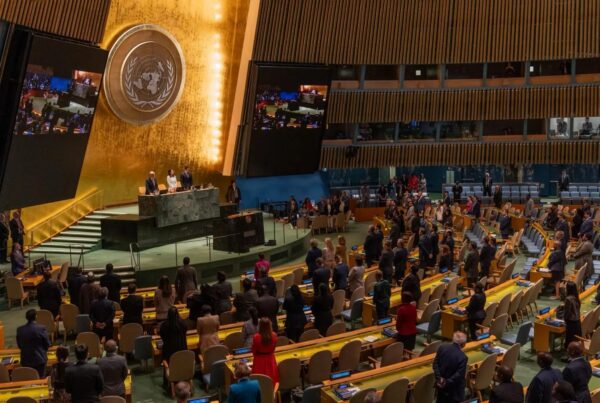The rare earths industry once again finds itself in the geopolitical spotlight as the United States and Australia announced a multi-billion-dollar partnership to strengthen the supply and processing of these critical minerals. The deal aims to create an alternative supply chain to reduce dependence on China, which currently dominates global rare earths production and refining. However, experts believe the impact of this deal will take years to materialize, as China’s grip on the industry remains exceptionally strong.
A Strategic Step Toward Independence
The U.S.–Australia agreement was designed to accelerate the development of mines, refineries, and magnet manufacturing outside China. Washington has long sought to build a stable and secure source of critical minerals needed for defense systems, electric vehicles, and renewable energy infrastructure. Meanwhile, Canberra’s resource-rich land positions it as a natural partner in this effort.
For both countries, the collaboration represents not just an economic venture but a strategic move. It aims to reduce the global risk of supply disruption and ensure that the technologies powering modern economies are not overly reliant on a single country.
Shared Economic and Security Goals
Under the deal, both nations committed approximately US $3 billion in joint investments to support mining and processing projects across Australia. The initiative also includes government-backed financing mechanisms and long-term purchase agreements to guarantee demand for newly produced materials.
The partnership focuses on rare earth elements such as neodymium, praseodymium, and dysprosium—key materials for high-performance magnets used in electric vehicles, wind turbines, and advanced military equipment.
The agreement also encourages innovation in refining technologies, which remain one of the most critical bottlenecks in the supply chain. By improving refining capacity outside China, the U.S. and Australia hope to build a more balanced and secure industrial base for the future.
Why China Still Dominates the Rare Earths Market
Deep Structural Advantage
Despite new investments, China’s dominance in the rare earths market remains overwhelming. The country currently accounts for around 90 percent of global refining capacity and nearly 70 percent of mining output. In addition, China has developed a mature ecosystem for processing and magnet manufacturing that extends far beyond what any other country can match in scale or efficiency.
This structural advantage means that even if other nations ramp up mining activities, most raw materials still need to be sent to China for refinement. As a result, Beijing maintains control over the most valuable part of the production chain.
Long Road to Diversification
Developing a full supply chain—from extraction to finished magnet production—requires years of investment, technical expertise, and environmental management. Many of the projects launched under the new U.S.–Australia framework are not expected to reach commercial operation until the end of this decade.
Additionally, downstream industries such as magnet manufacturing and alloy processing remain concentrated in China. Without a corresponding expansion of these capabilities elsewhere, supply diversification will remain limited.
Pricing and Market Behavior
Another factor that reinforces China’s dominance is price competitiveness. Chinese producers benefit from decades of infrastructure investment and economies of scale, allowing them to offer rare earths at lower prices than most competitors. Unless Western buyers are willing to pay a premium for supply security, alternative sources may struggle to gain a foothold.
For this reason, the success of the U.S.–Australia alliance will depend not only on mining and refining capacity but also on global procurement behavior. Companies in sectors such as automotive, defense, and renewable energy will need to prioritize resilience over short-term cost savings.

The Broader Strategic Context
Implications for Defense and Technology
Rare earths are critical components in advanced technologies such as missile guidance systems, fighter jets, and communication satellites. They are also vital for green technologies, including electric motors and wind turbines. The deal underscores how rare earths have become a cornerstone of both national security and energy transition strategies.
By deepening cooperation with Australia, the U.S. aims to ensure a steady supply for its defense and clean-energy sectors while reducing vulnerability to Chinese export restrictions.
Strengthening Allied Supply Chains
This partnership reflects a broader pattern of economic alignment among U.S. allies. Similar discussions are underway with Japan, South Korea, and the European Union. The goal is to create a network of “friendly supply chains” that prioritize transparency, environmental responsibility, and strategic reliability over low-cost sourcing.
Australia, for its part, stands to benefit economically and politically. By positioning itself as a global supplier of responsibly sourced critical minerals, it strengthens its influence in the Indo-Pacific region and reinforces its alliance with Washington.
China’s Strategic Response
China, however, is unlikely to remain passive. Recent moves to impose export controls on certain critical minerals demonstrate its intent to maintain influence over global supply. Beijing has also accelerated domestic innovation to solidify its dominance in refining and magnet manufacturing technologies.
In response, Western nations are expected to increase subsidies, research funding, and infrastructure investment to close the competitive gap. The outcome of this industrial race will likely shape the future of clean energy and defense technologies for decades to come.
Challenges and Outlook
While the U.S.–Australia deal is a landmark agreement, its short-term impact on global supply chains will be limited. Building mines and processing plants takes years, and the technical barriers to refining are significant. Environmental concerns, regulatory processes, and high capital costs can also delay progress.
Nonetheless, the initiative sends a powerful message: diversification is no longer optional. The pandemic, the war in Ukraine, and recent trade tensions have exposed the fragility of global supply networks. Nations now recognize that strategic materials like rare earths cannot depend on a single dominant producer.
The path forward will require coordination across multiple fronts—financial support, technology transfer, environmental governance, and private-sector participation. Success will depend on whether allied nations can maintain political will and economic commitment over the long term.
In conclusion, the U.S.–Australia rare earths deal represents an important beginning rather than a breakthrough. It lays the foundation for a more resilient and diversified global supply chain, yet dislodging China’s entrenched dominance will take sustained effort and time. As new projects progress and geopolitical competition intensifies, the rare earths sector will remain one of the most strategically important battlegrounds of the 21st century. Readers can follow more developments on global energy and technology supply chains at Olam News.




